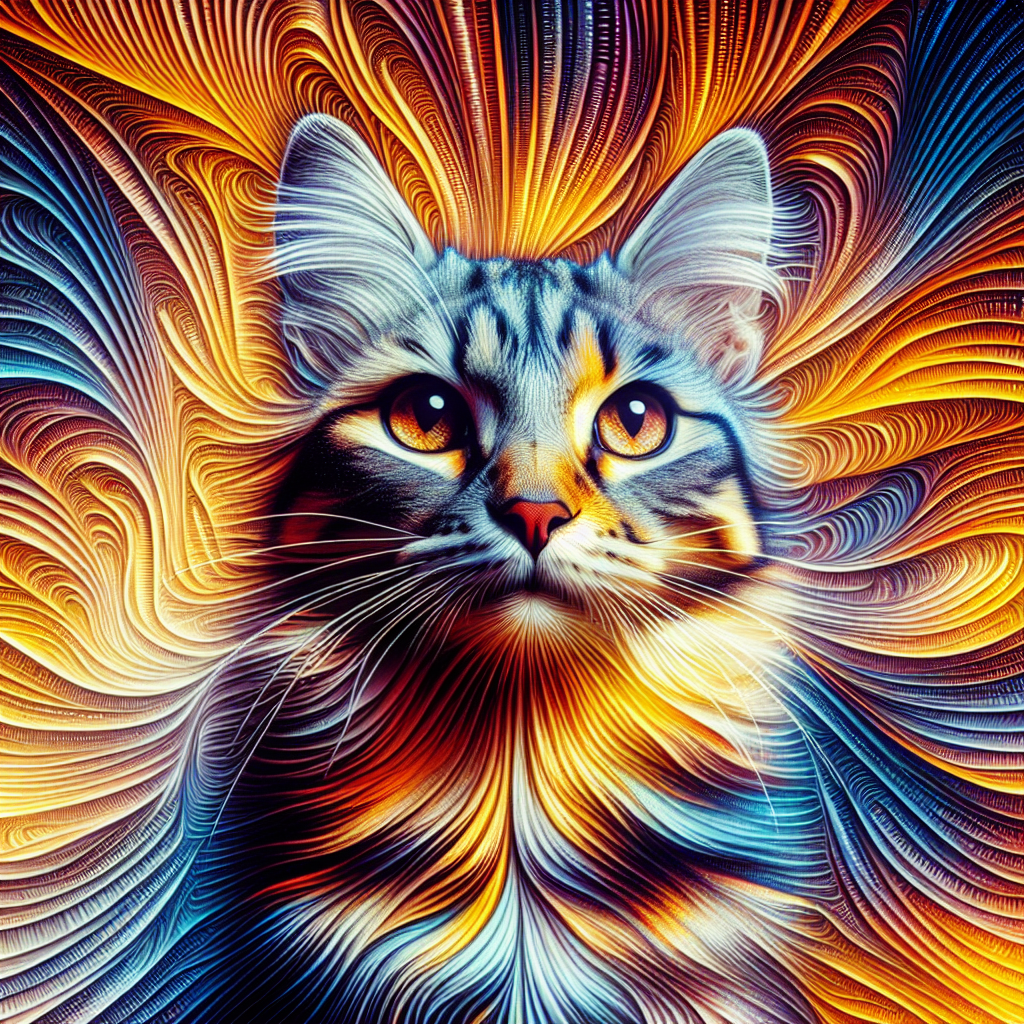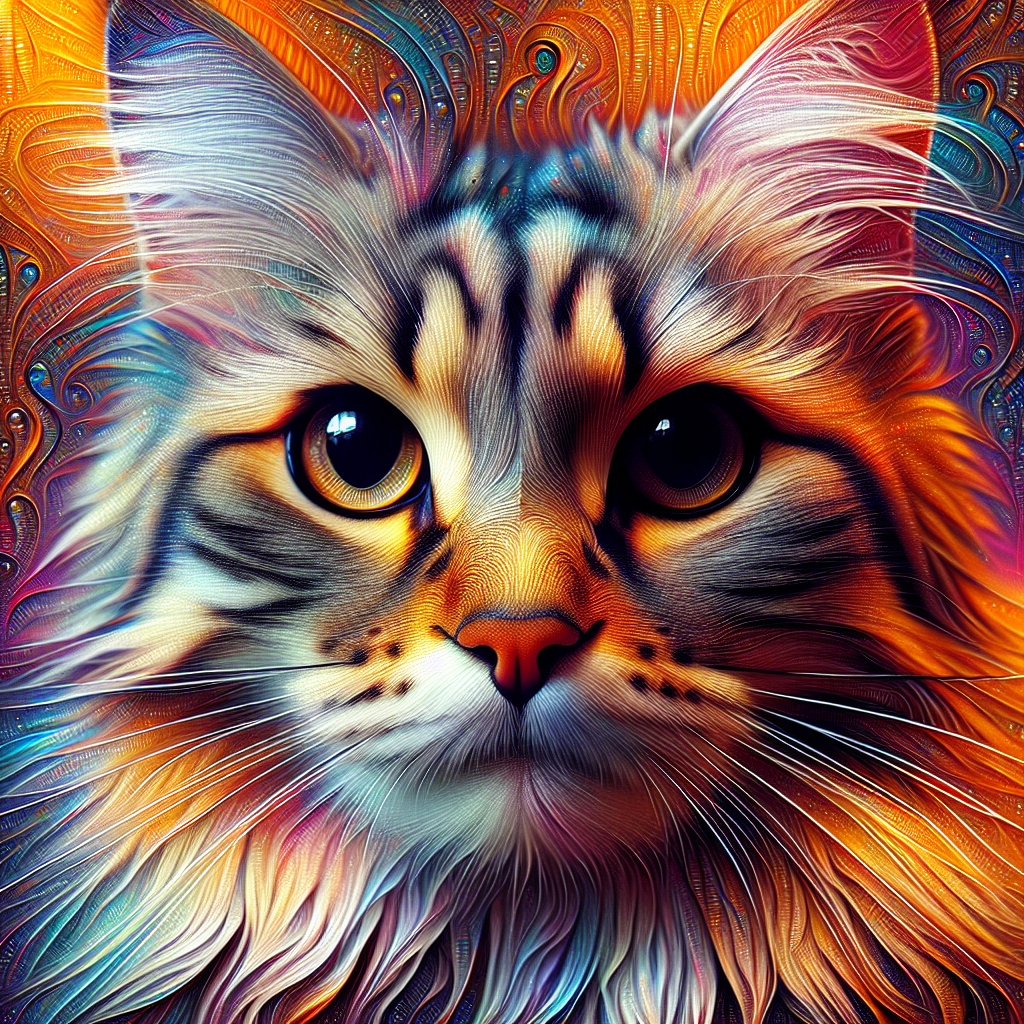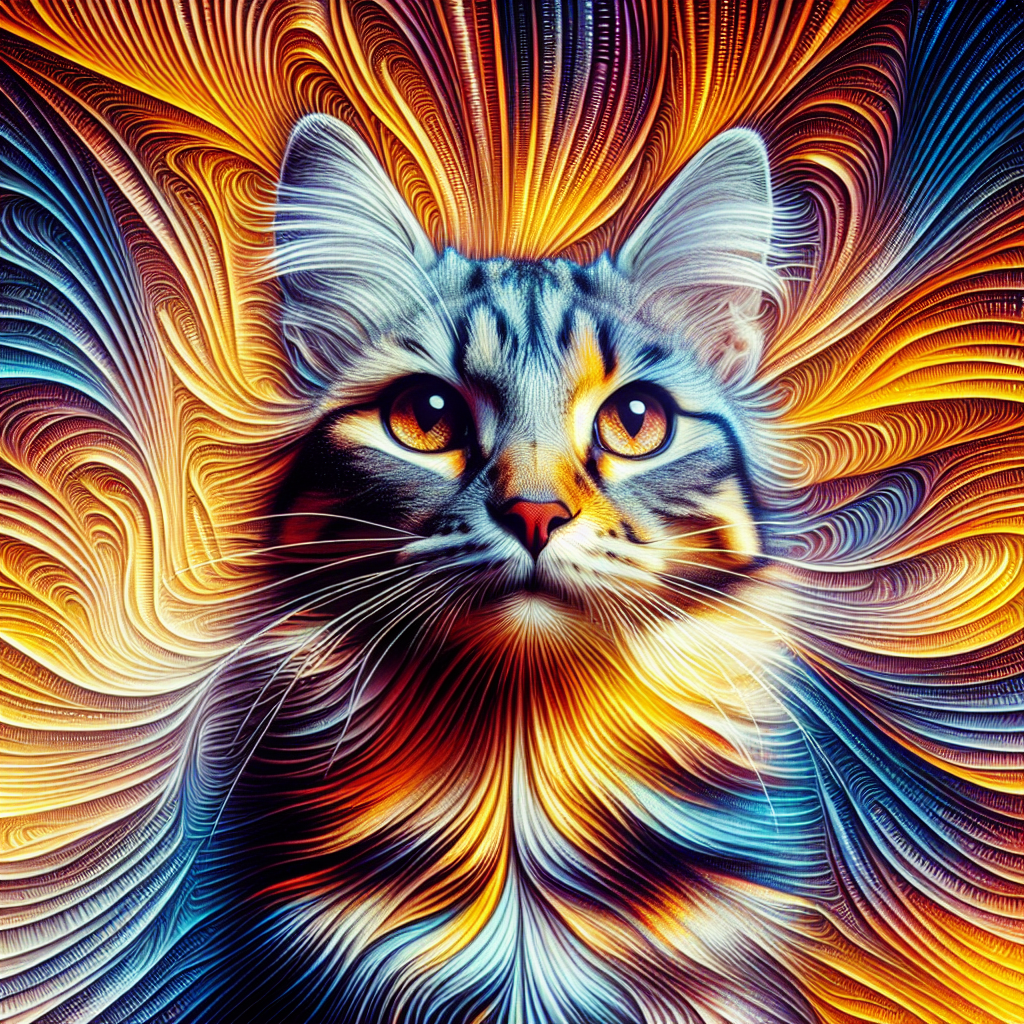Did you ever wonder if tabby cats are a specific breed? Well, the answer might surprise you. While many people believe that tabby cats are a distinct breed, they are actually not. Tabby is actually a coat pattern that can be found in a variety of different cat breeds. So, if you’ve been wondering if your beloved tabby is part of an exclusive breed, don’t worry – she’s special in her own unique way, but not because she belongs to a particular breed. Let’s explore more about what makes tabby cats so remarkable and how their patterns can vary from one cat to another.
What is a Tabby Cat?
A tabby cat refers to a specific coat pattern found in domestic cats rather than a specific breed. Tabby cats are known for their distinct coat markings, which include stripes, swirls, spots, or a combination of these patterns. The term “tabby” actually comes from the French word “tabis,” which means a silk fabric with a wavy pattern. While tabby cats can come in various breeds, the tabby coat pattern is prevalent across many different feline lineages. Let’s delve into the physical characteristics, origins, genetics, misconceptions, popularity, health, care, breed standards, and breeding considerations related to tabby cats.
Physical Characteristics of Tabby Cats
Tabby cats can come in different sizes, shapes, and colors just like any other domestic cat. However, they are easily identifiable by their unique coat patterns. The most common characteristic of tabby cats is their striped or lined markings. These stripes can be thick or thin, and they usually run vertically down their bodies. Some tabby cats also exhibit swirls or circular markings, which are often found on their sides or flanks. The color variations in tabby cats can be diverse, ranging from traditional brown tabbies to silver tabbies, red tabbies, and even blue or gray tabbies. Additionally, tabby cats often have a distinctive “M” shape on their foreheads.

Famous Tabby Cats
Throughout history, tabby cats have been adored and admired by many individuals, including famous figures. Some notable tabby cats include:
-
Towser: Towser was a beloved tabby cat who lived at the Glenturret Distillery in Scotland. She gained fame for her extraordinary rat-catching skills and held a Guinness World Record for catching a staggering 28,899 rats during her lifetime.
-
Morris the Cat: Morris the Cat was not only an iconic advertising mascot for 9Lives cat food but also a beloved tabby cat. His charming personality and distinctive orange tabby markings made him a recognizable feline face in the 1970s and beyond.
-
Baker: In the infamous nursery rhyme “Pussycat, Pussycat,” one of the cats mentioned is a tabby named Baker. This furry character has captured the hearts and imaginations of children and adults alike.
Types of Tabby Cats
Tabby cats can be categorized into different types based on their coat patterns. The most common types of tabby cats include:
Classic Tabby
The classic tabby pattern is characterized by bold, swirling patterns on the cat’s sides. These swirling patterns often form shapes similar to a marble or bull’s eye. Classic tabbies may also have thick, straight lines running from their spine to their abdomen. This type of tabby is often referred to as a “marbled” or “blotched” tabby.
Mackerel Tabby
The mackerel tabby is distinguished by its narrow, evenly spaced stripes that resemble a fishbone pattern. The stripes run parallel to each other down the cat’s body and tail. This pattern is reminiscent of the markings found on mackerel fish, hence the name “mackerel tabby.”
Spotted Tabby
Spotted tabbies exhibit circular or oval-shaped spots on their bodies rather than stripes or swirling patterns. These spots can vary in size and can be evenly spaced or scattered. Some spotted tabbies may have larger spots on their backs that resemble a rosette pattern, similar to what is seen in certain wild cat species.
Ticked Tabby
The ticked tabby pattern is less prominent than the other tabby patterns. Instead of bold stripes or spots, ticked tabbies have a coat that appears uniform in color from a distance but is actually made up of thousands of individual hairs with alternating bands of color. This gives the fur a salt-and-pepper or agouti appearance.

Origins and History of Tabby Cats
Ancient Origins
Tabby cats have a rich history that can be traced back to ancient times. The tabby pattern is not exclusive to domestic cats; it can also be found in various wild cat species. It is believed that the tabby pattern emerged as a form of camouflage, allowing cats to blend into their natural environments and better hunt their prey. The earliest recorded evidence of tabby cats can be found in Egyptian hieroglyphs dating back to around 1600 BCE. These hieroglyphs depict cats with distinct tabby markings, highlighting the long-standing presence of tabby cats throughout history.
Tabby Cats in Europe
Tabby cats became popular in Europe during the Middle Ages. They were highly valued for their hunting abilities, particularly in controlling rodent populations in homes, farms, and even aboard ships. Tabby cats were known to be excellent mousers and were often kept as companions and working cats. The appreciation for tabby cats grew, and their distinctive coat patterns became a source of admiration and intrigue.
Tabby Cats in America
Tabby cats made their way to America during the colonial era. They were highly regarded for their exceptional hunting skills and played an essential role in keeping barns, homes, and settlements free from rodents. The love and admiration for tabby cats continued in America, and they became cherished companions in households across the country. Today, tabby cats can be found in homes, shelters, and feline communities worldwide.
Genetics of Tabby Cats
Tabby Coat Patterns
The tabby coat patterns are believed to be controlled by a set of genes that determine the distribution and appearance of the tabby markings. These genes interact with other genes responsible for fur color, resulting in the wide range of tabby patterns seen in domestic cats. The specific genetic combinations determine whether a cat will have classic, mackerel, spotted, or ticked markings.
The Tabby Gene
The “agouti” gene is responsible for the development of tabby coat patterns. This gene controls the distribution of pigments in each individual hair strand, giving rise to the unique tabby markings. The agouti gene interacts with other genes that regulate the expression of specific tabby patterns, such as the presence or absence of stripes, spots, or swirls.
Misconceptions about Tabby Cats
Tabby Cats and Moggies
One common misconception is that tabby cats are synonymous with mixed breed or “moggie” cats. While tabby cats are often found in mixed breed populations, they can also be found in various purebred cat breeds. The tabby coat pattern is not exclusive to any particular breed, and you can find tabby cats among pedigreed breeds such as Maine Coons, Abyssinians, and Bengals.
Tabby Cats and the Maine Coon Breed
Another common misconception is that all Maine Coon cats are tabbies. While it is true that tabby Maine Coons are quite common and the tabby pattern is prevalent within the breed, Maine Coons come in a range of other solid and patterned coat colors, including solid black, cream, tortoiseshell, and many more.
Tabby Cats as a Popular Choice
Tabby Cats as Domestic Pets
Tabby cats are widely celebrated as delightful and affectionate companions. Their friendly and outgoing nature often makes them a popular choice for families and individuals alike. Tabby cats have been cherished pets for centuries, and their adaptability, intelligence, and playful personalities make them a favorite among cat lovers. Whether it’s a classic tabby, mackerel tabby, spotted tabby, or ticked tabby, each type offers its own unique charm.
Tabby Cats in Pop Culture
Tabby cats have also made their mark in popular culture. From fictional characters like Garfield, who is known for his mischievous antics, to the Cheshire Cat from Lewis Carroll’s “Alice’s Adventures in Wonderland,” tabby cats have captured the imaginations of people of all ages. Their distinctive appearance and endearing personalities have made them sought-after characters in books, movies, and even viral internet memes.
Health and Care of Tabby Cats
Common Health Issues in Tabby Cats
Like any other cat, tabby cats are susceptible to various health issues. Some common health conditions that tabby cats may be prone to include obesity, dental problems, urinary tract issues, and certain genetic conditions. Regular veterinary check-ups, a balanced diet, regular exercise, and dental care are essential for maintaining the overall health and well-being of tabby cats.
Grooming and Maintenance
Tabby cats have varying coat lengths, and grooming requirements may differ based on individual cats. Cats with longer fur may require regular brushing to prevent matting and keep their coats healthy and shiny. Short-haired tabby cats may benefit from occasional brushing to reduce shedding and remove loose hair. Additionally, routine grooming sessions provide an opportunity to bond with your tabby cat and monitor their overall health.
Breed Standards for Tabby Cats
Tabby Cats and Breed Associations
While tabby cats are not considered a specific breed, they can still participate in cat shows and competitions. Many breed associations, such as The International Cat Association (TICA) and the Cat Fanciers’ Association (CFA), have specific breed standards for tabby cats. These standards outline the ideal physical characteristics, coat patterns, and colorings for tabby cats participating in shows or competitions.
Physical Characteristics Defined by Standards
Breed standards for tabby cats focus on various aspects, including body structure, head shape, eye color, and coat pattern. For example, in the TICA breed standard for Maine Coons, a classic tabby pattern is described as having bold, swirling patterns with distinct markings along the forehead, cheeks, and shoulders. The standards also outline specific requirements for fur color, eye shape, ear shape, and other physical attributes that contribute to the overall presentation of the cat.
Breeding Tabby Cats
Breeding for Specific Coat Patterns
Some breeders specialize in breeding tabby cats to produce specific coat patterns. By selectively breeding cats that exhibit desired tabby patterns, they aim to create litters that consistently display those specific markings. However, breeding for specific coat patterns requires an understanding of feline genetics and a commitment to ethical breeding practices that prioritize the health and well-being of the cats involved.
Challenges in Breeding Tabby Cats
Breeding tabby cats can present its own set of challenges. The inheritance of coat patterns is influenced by multiple genes, making it harder to predict the exact outcome of a breeding. Additionally, breeders need to carefully consider the genetic diversity within each lineage to avoid potential health issues and maintain the overall vitality of the breed. Responsible breeders conduct thorough research, consult with experts, and prioritize the welfare of the cats they breed.
Conclusion
Tabby cats hold a special place in the hearts of cat lovers around the world. Their diverse coat patterns, charming personalities, and historical significance make them beloved companions in countless households. Although tabby cats are not considered a specific breed, they can be found in various pedigreed cat breeds and mixed breed populations. The distinct coat patterns exhibited by tabby cats are the result of intricate genetic interactions, and their origins can be traced back to ancient times. Whether you’re enamored by the classic tabby’s swirling patterns, the mackerel tabby’s fishbone stripes, the spotted tabby’s playful dots, or the subtle elegance of the ticked tabby, tabby cats offer a delightful combination of beauty and personality. So, whether you’re considering bringing a tabby cat into your home or simply appreciating their unique qualities, tabby cats are sure to bring joy and companionship to your life.

